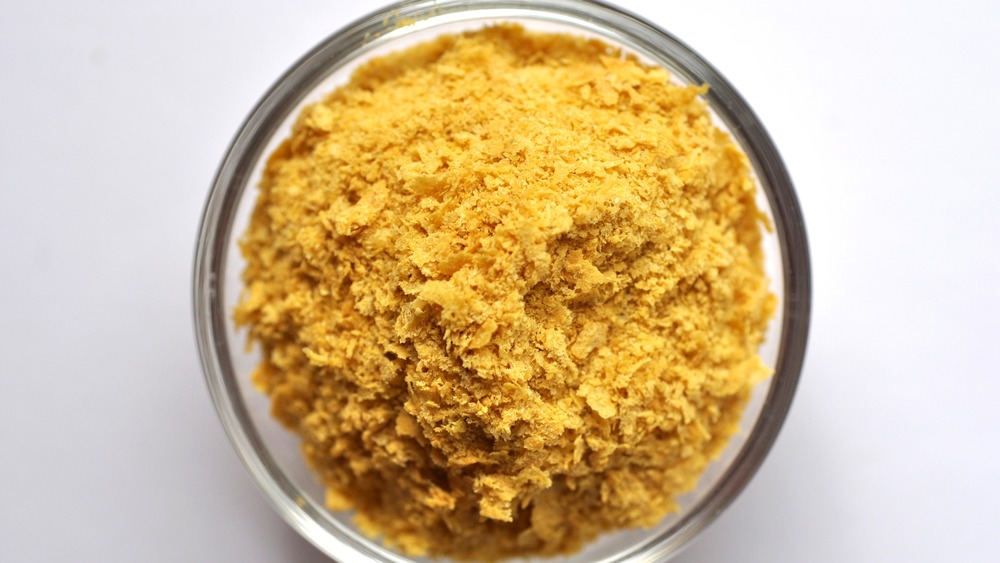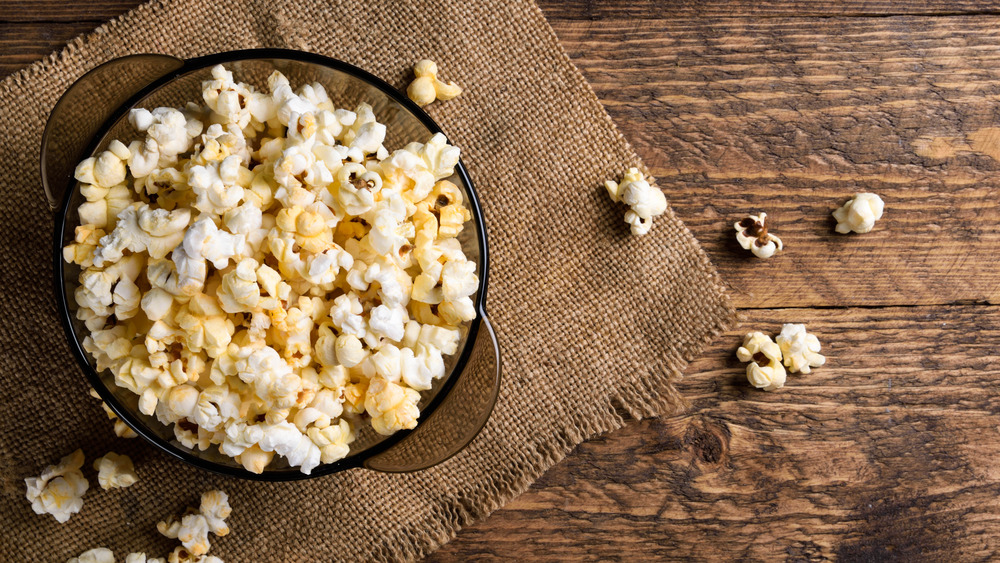What You Need To Know Before You Try Nutritional Yeast
If you haven't yet sprinkled nutritional yeast on your popcorn, it's not too late to join the fan club created by this popular vegan ingredient. Even though the name "nutritional yeast" sounds a bit like something only loved by bodybuilders and nutritionists, there's plenty of reason for those of us who are neither to start adding it to our diets. The golden flakes, also known as "nooch," pack a one-two punch in both flavor and nutrition.
Nutritional yeast is actually a species of yeast known as Saccharomyces cerevisiae, which is related to the more familiar baker's and brewer's yeasts. The live yeast is grown on a sweet medium like molasses or whey for several days. After that, Brandice Lardner, an NASM-certified personal trainer and nutrition coach with One by One Nutrition, explains, "When the yeast is harvested, it is washed and then dried with heat so that it stops growing" (via Livestrong). After being dried, it is crumbled and packaged for distribution. The heating process deactivates the yeast and it can no longer be used as a leavening.
Nutritional yeast packs a healthy punch
Because it packs a host of vitamins and minerals into a small serving, nutritional yeast is often prized as a superfood. Although nutrient profiles vary from brand to brand, according to Bragg, a serving of just two tablespoons can provide five grams of high-quality complete protein (containing all nine essential amino acids that humans must get from food), three grams of carbohydrates (of which two are fiber), and substantial amounts of B vitamins, including vitamin B12. Vitamin B12 is not found in whole, unprocessed plant foods, making nutritional yeast an especially important addition to vegan diets. To top it off, nutritional yeast is low-fat, gluten-free, and contains antioxidants and trace minerals. What's not to love?
So how to start using nutritional yeast? Alissa Rumsey, registered dietitian and owner of Alissa Rumsey Nutrition and Wellness, notes, "Since nutritional yeast has a cheesy flavor, it can be quite enjoyable to add to many meals and snacks" (via Women's Health). Common uses include sprinkling it anywhere a cheesy, umami, parmesan-like flavor would work — like over popcorn or cooked vegetables, or stirring it into soups and pastas.
And bonus — nutritional yeast can have a lengthy shelf life of up to two years when stored properly — in a tightly-sealed container, placed in a cool, dark spot.


